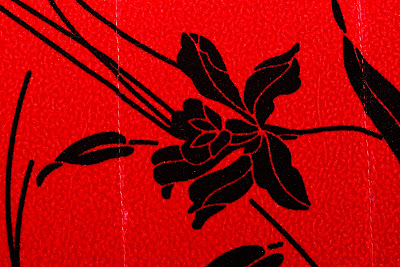Texture of an image is the feel it gives about the surface of the object; it gives the viewer valuable information about how the particular object will be to touch. An image with perfectly captured texture gives the information where even thousand words may fail to convey.
The ‘secret formula’ to perfectly capture the details in texture is the use of right lighting. Believe me you'll be surprised at how much texture you can bring out in a seemingly flat object by lighting it differently.
There are three things to consider when photographing textures.
1. The nature of the light whether hard or soft
2. The angle at which the light hits the subject
The ideal light to shoot texture is neither hard nor soft; it is somewhere in between. First thing to do is to remove any sort of diffusers you have mounted and let the harsh light hit the directly.
Place the subject to be photographed somewhere that allows you to set up your light on the same plane as the subject, a table which is a foot or two high can be a good solution. If not consider placing both the object to be photographed and the light on the floor. The idea is to let the light rake across the surface. Using a table gives you the ability to vary the height or angle of your light source to create different looks, even seemingly small shift in the height or angle of the light dramatically changes the appearance of the texture.
Using a table gives you the maneuverability to change the height or angle of your light source to create different looks.Even seemingly small shift in the height or angle of the light dramatically changes the appearance of the texture.
Finally let us experiment about possibilities about of capturing textures by varyingdistance between subject and light source. Get started by placing your light a few feetaway from your subject and observe the results, then try increasing or decreasing the distance; till you find the perfect lighting for the texture you wish to capture.
Here are some examples. Remember our previous article about Finding Great Texture; I needed something to illustrate the point being discussed here. But I was tired and lazy so settled with the nearest object that I could find. I shot the very fabric of the couch I was sitting; no hassles of texture-hunting!
 |
| Lighting for texture photography |
The picture above is shot with light coming from the same angle as the subject (diffused on camera flash). A dull example of front-lighting that gives the fabric surface a flat look with insignificant details.
Now I just moved the light to a 90 degree angle; behold the texture of the same subject now! Both the flash and the subject are at same height. (again diffused flash light at same level as the fabric)
Now I just removed the diffuser and shot it using bare flash the light was now placed a bit higher than the subject slightly angled down. Side-lighting is no mean thing; it can work magic bringing out textures that lie hidden in anything; here it just happened to be a fabric that is all.
Related Reading
- How to Photographs Fireworks - Tips for Photographing Fireworks Displays
- How to Capture Motion Blur in Photography - Tips for Photographing Moving Subjects
- How to Get Shallow Depth of Field in Your Digital Photos
- How to Recover Deleted Photos From Camera's Memory Card
- CandleLight Photography - How to Photograph In Candle Light


